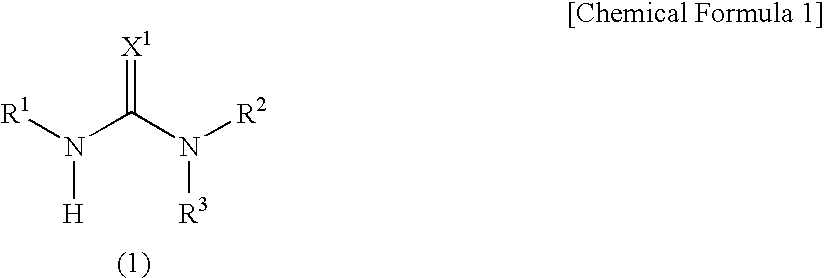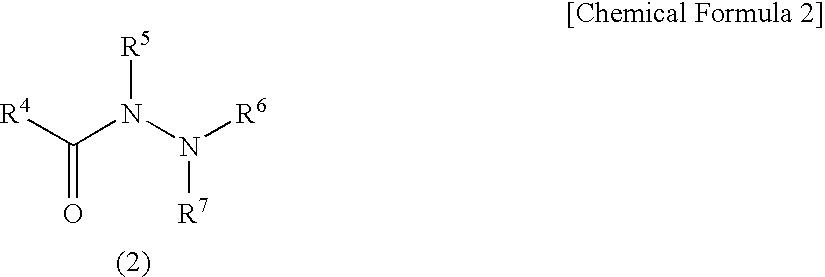Lubricating oil composition
a technology of lubricating oil and composition, which is applied in the direction of lubricant composition, organic chemistry, fuels, etc., can solve the problems of reducing shear stability, difficulty in completely satisfying such demands, and method restrictions, and achieves low temperature viscosity properties, low abrasiveness, and high viscosity-temperature characteristics
- Summary
- Abstract
- Description
- Claims
- Application Information
AI Technical Summary
Benefits of technology
Problems solved by technology
Method used
Image
Examples
examples
[0271]The present invention will now be explained in greater detail by examples and comparative examples, with the understanding that these examples are in no way limitative on the invention.
[0272][Production of Base Oil 1]
[0273]First, a fraction separated by vacuum distillation in a process for refining of solvent refined base oil was subjected to solvent extraction with furfural and then hydrotreatment, which was followed by solvent dewaxing with a methyl ethyl ketone-toluene mixed solvent. The wax portion removed during solvent dewaxing and obtained as slack wax (hereunder, “WAX1”) was used as the stock oil for the lubricating base oil. The properties of WAX1 are shown in Table 1.
TABLE 1Name of starting WAXWAX1kinematic viscosity at 100° C.,6.3mm2 / sMelting point, ° C.53Oil content, % by mass19.9Sulfur content, ppm by mass1900
[0274]Next, WAX1 was used as the stock oil for hydrotreatment with a hydrotreatment catalyst. The reaction temperature and liquid space velocity were control...
examples 1 and 2
Comparative Examples 1-6
[0287]For Examples 1 and 2 and Comparative Examples 1-6, base oil 1 listed in Table 4, base oil 5 listed in Table 5, and base oils 6 and 7 described below and additives were used to prepare lubricating oil compositions having the compositions listed in Tables 6 and 7. The proportions of the base oils in Table 4 and 5 are shown as values based on the total amount of the base oils, and the amounts of additives are shown based on the total amount of the composition.
(Base Oils)
[0288]Base oil 6: Poly-α-olefin base oil (kinematic viscosity at 100° C.: 3.9 mm2 / s, viscosity index: 126, S: <0.01% by mass, CCS viscosity at −35° C.: 1500 mPa·s, NOACK: 12% by mass)
Base oil 7: Ester base oil (kinematic viscosity at 100° C.: 9.2 mm2 / s, viscosity index: 176, pour point: −30° C., S: <0.01% by mass)
(Additives)
A: Oleylurea
[0289]B1: Zinc dibutylphosphate (phosphorus content: 13.2% by mass, sulfur content: 0% by mass, zinc content: 13% by mass)
B2: Mixture of sec-butyl-ZnDTP / sec-...
PUM
| Property | Measurement | Unit |
|---|---|---|
| Temperature | aaaaa | aaaaa |
| Temperature | aaaaa | aaaaa |
| Percent by mass | aaaaa | aaaaa |
Abstract
Description
Claims
Application Information
 Login to View More
Login to View More - R&D
- Intellectual Property
- Life Sciences
- Materials
- Tech Scout
- Unparalleled Data Quality
- Higher Quality Content
- 60% Fewer Hallucinations
Browse by: Latest US Patents, China's latest patents, Technical Efficacy Thesaurus, Application Domain, Technology Topic, Popular Technical Reports.
© 2025 PatSnap. All rights reserved.Legal|Privacy policy|Modern Slavery Act Transparency Statement|Sitemap|About US| Contact US: help@patsnap.com



